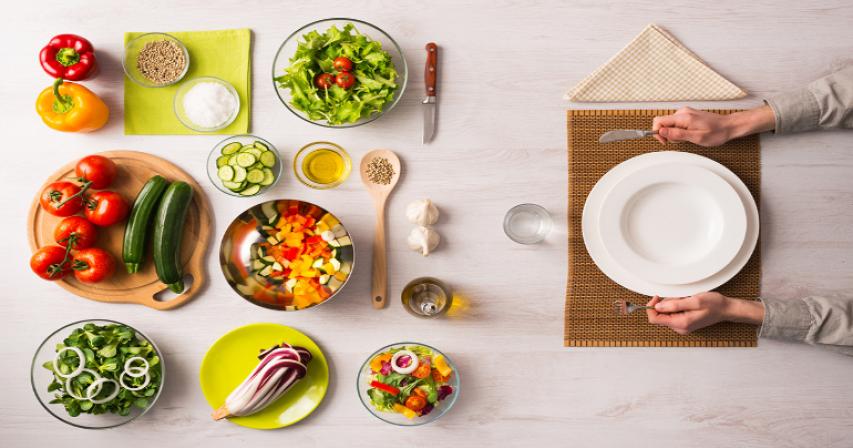EASY GUIDE TO PERFECT PORTION CONTROL
- 4 years ago

Knowing what portion size, you should be having of each food type is a huge problem when it comes to monitoring your diet, particularly if you are trying to lose weight. In our supersized society, where we are actively encouraged to buy large for only a small extra charge, it is no wonder that obesity levels have risen, and we are left completely clueless about how much should actually be on our plates.
There’s not many of us who can spare the time, or quite frankly the bother, to weigh out food to ensure it meets the current recommended guidelines, which is why new graphics have been released that enable us to think about our portion sizes in a brand new and easier way. We have long been familiar with the Food Standards Agency (FSA) ‘eat well’ plate, which offers a visual representation of portion sizes on a plate and is based on the 5 main food groups of:
Fruit and vegetables
Protein – meat, fish, eggs, beans etc.
Fatty and sugary foods/drinks
Milk and dairy products
Starchy foods – bread, potatoes, rice, pasta etc.
But that still doesn’t offer us much help with how much we should actually be eating of those foods, just simply that we should be having, for example more fruit and vegetables than we should of milk and dairy foods. The idea behind the new graphic is to relate a food type to an everyday object in order to give people a visual clue as to the actual size. Food scientists have spent a long time researching and experimenting with different foods in order to come up with the new guide, with the hope that if we can get our portion sizes under control, obesity levels may start to decrease too.
The impact of how portion control can make a difference to your waistline is highlighted in Martin and Marian Shirran’s book The Gastric Mind Band. They say, “Spread butter on your toast, but be aware that a teaspoon of ¬butter is 37 ¬calories, but a ¬tablespoon is three times as much (111 calories). Put dressing on your salad, but learn to weight the vinegar in favour of the oil. A teaspoon of oil may be 45 -calories, but a tablespoon is 135. That one extra tablespoon of oil every day amounts to a stone weight gain over a year. Switch to sweetener in your tea or -coffee. Cutting out two spoons of sugar in your tea three times a day creates an annual calorie deficit of 37,000 calories, which could be enough to shed more than 11lb. Have ice cream occasionally, but just one scoop (about 150 calories) and never eat it straight from the tub. Enjoy a few nuts with a drink, but stop at one or two (a small 4oz bag will set you back 600 calories).’ It really is the small changes that can make a huge difference in the longer term and learning to cut down our portions to a more sensible level could be one of the solutions to the obesity crisis.
Comments